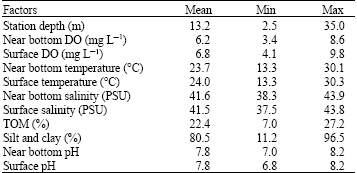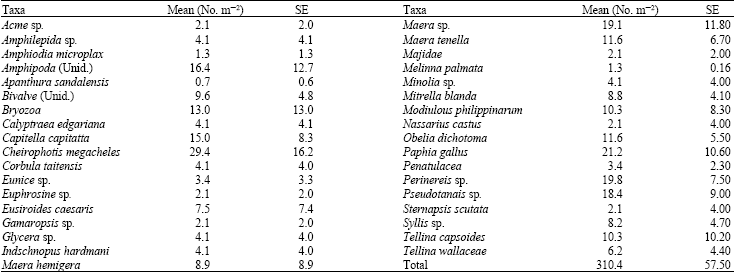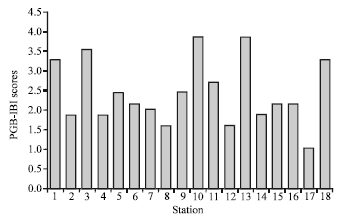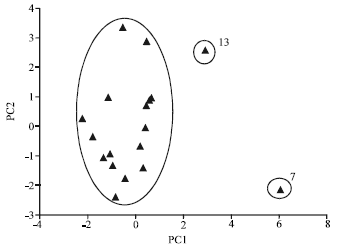Research Article
Applying Benthic Index of Biotic Integrity in a Soft Bottom Ecosystem in North of the Persian Gulf
Department of Marine Biology, Faculty of Marine Science,Khoramshahr University of Marine Science and Technology, P.O. Box 669, Khoramshahr, Khuzestan, Iran
A. Savari
Department of Marine Biology, Faculty of Marine Science,Khoramshahr University of Marine Science and Technology, P.O. Box 669, Khoramshahr, Khuzestan, Iran
S.M.B. Nabavi
Department of Marine Biology, Faculty of Marine Science,Khoramshahr University of Marine Science and Technology, P.O. Box 669, Khoramshahr, Khuzestan, Iran
P. Kochanian
Department of Fisheries, Faculty of Natural Resources,Khoramshahr University of Marine Science and Technology, P.O. Box 669, Khoramshahr, Khuzestan, Iran
M. Sadrinasab
Department of Physical Oceanography, Faculty of Marine Science, Khoramshahr University of Marine Science and Technology, P.O. Box 669, Khoramshahr, Khuzestan, Iran















